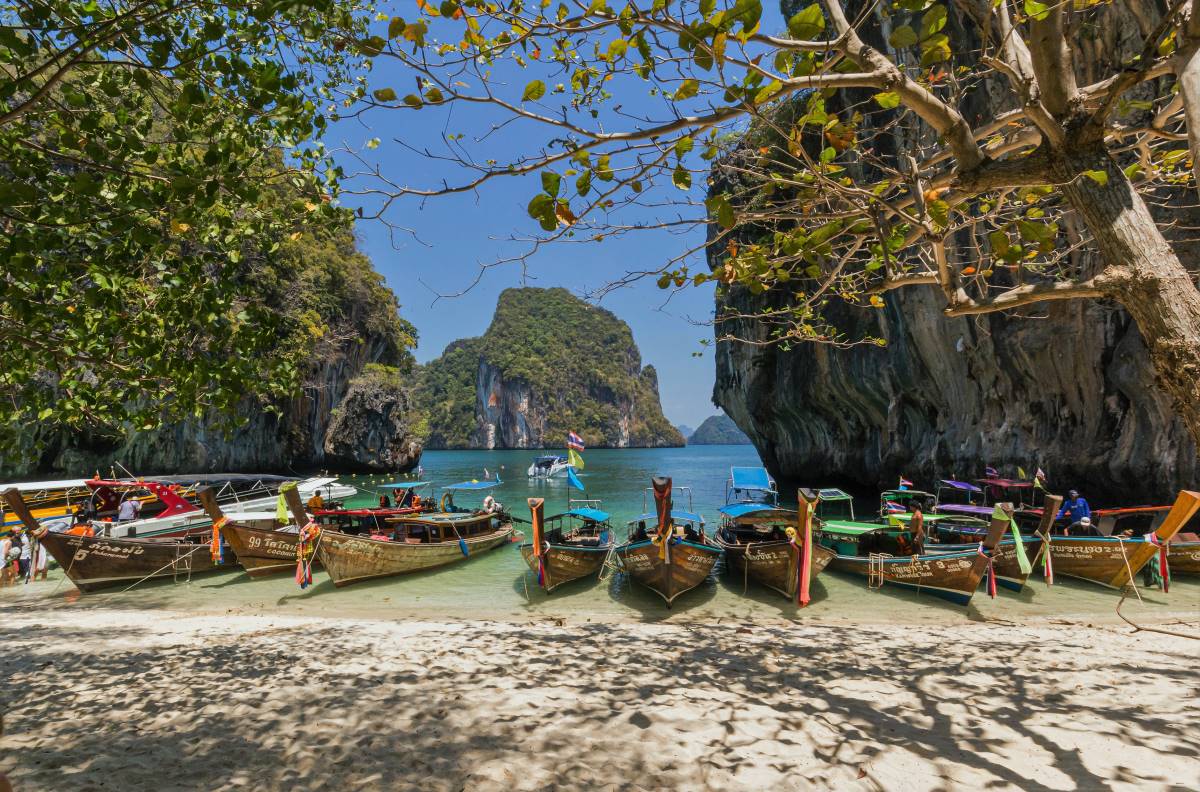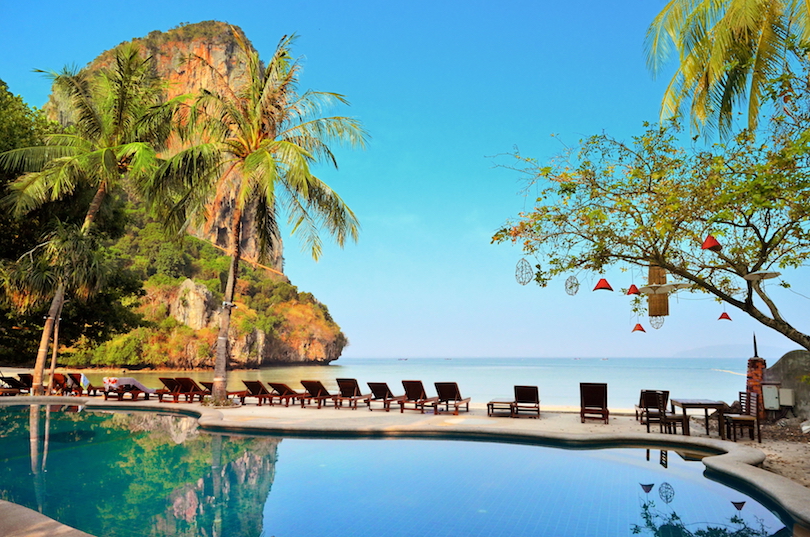
Thailand, the "Land of Smiles," beckons with an intoxicating blend of ancient traditions, breathtaking natural beauty, and a vibrant modern culture. From the serene temples of the north to the turquoise waters of the southern islands, Thailand offers an unparalleled travel experience. But with so much to see and do, the question arises: where to stay in Thailand? This comprehensive guide will navigate you through the country’s diverse regions, uncover its rich history, equip you with essential travel tips, explore accommodation options, discuss transportation, and pinpoint the best time to visit, ensuring your Thai adventure is nothing short of extraordinary.
A Glimpse into Thailand’s Storied Past
Before diving into destinations, understanding Thailand’s history provides a deeper appreciation for its cultural landscape. For centuries, the region was home to powerful kingdoms like Sukhothai and Ayutthaya, leaving behind magnificent ruins that stand as testaments to their grandeur. Siam, as Thailand was formerly known, famously resisted European colonization, maintaining its independence and forging a unique cultural identity. The influence of Buddhism permeates every aspect of Thai life, from the intricate temple architecture to the gentle demeanor of its people. The current monarchy, revered by the nation, plays a significant role in preserving traditions and fostering national pride. This rich history is palpable in the ancient cities, the intricate artistry of temples, and the enduring spirit of the Thai people.

Related Articles about Thailand: A Tapestry of Temples, Beaches, and Bustling Cities – Your Ultimate Guide to Where to Stay:
- The Golden Gate Beckons: A Comprehensive Travel Guide to San Francisco
- The Land of Smiles on a Budget: Your Guide to Cheap Flights and Unforgettable Adventures in Thailand
- Rome: An Eternal Journey Through History, Art, and La Dolce Vita
- Bali: Island of the Gods, A Symphony of Serenity and Adventure
- Sri Lanka: The Pearl of the Indian Ocean – Your Comprehensive Travel Guide
Top Attractions: A Kaleidoscope of Experiences
Thailand’s allure lies in its sheer diversity of attractions, catering to every traveler’s whim:
- Bangkok: The Vibrant Metropolis: The pulsating heart of Thailand, Bangkok, is a city of contrasts. Majestic Grand Palace and the sacred Wat Phra Kaew (Temple of the Emerald Buddha) stand as architectural marvels. Explore the bustling Chatuchak Weekend Market, a shopper’s paradise. Glide along the Chao Phraya River on a longtail boat, discovering hidden canals and the iconic Wat Arun (Temple of Dawn). Immerse yourself in the vibrant street food scene, a culinary adventure in itself.
- Chiang Mai: The Rose of the North: Nestled amidst mist-shrouded mountains, Chiang Mai offers a more relaxed pace. The ancient city walls enclose over 300 temples, with the most revered being Wat Phra That Doi Suthep, perched atop a mountain offering panoramic views. Participate in an ethical elephant sanctuary experience, learn the art of Thai cooking, or wander through the vibrant night bazaar. The surrounding countryside is dotted with charming villages and natural wonders.
- Phuket: The Pearl of the Andaman: Thailand’s largest island, Phuket, is synonymous with postcard-perfect beaches. Patong Beach is famous for its lively nightlife, while Kata and Karon Beaches offer a more laid-back vibe. Explore the stunning Phang Nga Bay, dotted with limestone karsts, or take a boat trip to the breathtaking Phi Phi Islands. The island also boasts historical charm in Phuket Old Town with its Sino-Portuguese architecture.
- Koh Samui: Tropical Paradise: This popular island in the Gulf of Thailand boasts palm-fringed beaches, coconut plantations, and a vibrant yet relaxed atmosphere. Chaweng Beach is the most developed, while Bophut offers a charming Fisherman’s Village. Explore the iconic Big Buddha Temple (Wat Phra Yai) or venture inland to discover hidden waterfalls and lush jungle.
- Krabi: Dramatic Landscapes: Krabi province is renowned for its dramatic limestone cliffs, emerald waters, and stunning islands. Railay Beach, accessible only by boat, is a rock climber’s paradise and offers breathtaking scenery. The Four Islands Tour is a must-do, visiting Phra Nang Cave Beach, Tup Island, Chicken Island, and Poda Island.
- Ayutthaya: The Ancient Capital: A UNESCO World Heritage Site, Ayutthaya was once the glorious capital of Siam. Explore the magnificent ruins of its temples and palaces, offering a glimpse into Thailand’s glorious past. Rent a bicycle to freely roam the historical park.
- Sukhothai: The Dawn of Happiness: Another UNESCO World Heritage Site, Sukhothai is considered the birthplace of the Thai nation and its art. Its well-preserved ruins exude a serene beauty, with intricate Buddha statues and graceful stupas.

Essential Travel Tips for a Seamless Journey
- Visa Requirements: Many nationalities can enter Thailand visa-free for a specified period. Always check the latest visa regulations for your nationality before traveling.
- Currency: The Thai Baht (THB) is the official currency. ATMs are widely available, and credit cards are accepted in most hotels, larger restaurants, and shops.
- Language: Thai is the official language. While English is spoken in tourist areas, learning a few basic Thai phrases will be greatly appreciated. "Sawasdee ka/krab" (hello), "Kob khun ka/krab" (thank you), and "Mai pet" (not spicy) are useful.
- Etiquette: Thailand is a Buddhist country, and respecting local customs is crucial. Dress modestly when visiting temples, covering shoulders and knees. Remove your shoes before entering temples and homes. Avoid touching people’s heads, as it is considered sacred. Public displays of affection should be kept to a minimum.
- Health and Safety: Consult your doctor about recommended vaccinations. Drink bottled water only. Be mindful of street food hygiene and choose vendors with high turnover.
- Bargaining: Bargaining is expected in markets and with tuk-tuk drivers. Do so politely and with a smile.
- Respect the Monarchy: The Thai monarchy is deeply revered. Avoid any disrespectful comments or actions towards the King and the royal family.
- Tuk-Tuks and Taxis: Agree on the fare before starting your journey. For taxis, ensure the meter is used.
Accommodation Options: From Budget Backpackers to Luxury Escapes
Thailand caters to every budget and travel style when it comes to accommodation.
- Hostels: Found in abundance in popular tourist hubs like Bangkok, Chiang Mai, and the islands, hostels offer a budget-friendly and social atmosphere. Dorm rooms and private rooms are typically available.
- Guesthouses and Budget Hotels: These offer comfortable and affordable private rooms, often with basic amenities. They are a great option for solo travelers or couples looking for a step up from hostels without breaking the bank.
- Mid-Range Hotels: Thailand boasts a vast array of mid-range hotels offering a good balance of comfort, amenities, and price. Expect air-conditioning, en-suite bathrooms, and often on-site restaurants and swimming pools.
- Boutique Hotels: For a more unique and personalized experience, boutique hotels offer stylish design, attentive service, and often a focus on local culture and ambiance.
- Luxury Resorts and Villas: Thailand is a premier destination for luxury travel. From opulent beachfront resorts in Phuket and Koh Samui to secluded jungle retreats in Chiang Mai, you’ll find world-class amenities, private pools, fine dining, and exceptional service.
- Homestays: For an authentic cultural immersion, consider a homestay, particularly in rural areas or smaller towns. This allows you to live with a local family, experience their daily life, and gain a deeper understanding of Thai culture.
Where to Stay Based on Your Interests:
- For the City Explorer: Bangkok (Sukhumvit, Silom, Siam), Chiang Mai (Old City, Nimmanhaemin)
- For the Beach Lover: Phuket (Patong, Kata, Karon), Koh Samui (Chaweng, Bophut), Krabi (Ao Nang, Railay), Koh Lanta, Koh Phangan (for a more relaxed vibe or Full Moon Party experience)
- For the Culture Vulture: Chiang Mai, Ayutthaya, Sukhothai, Lampang
- For the Adventure Seeker: Chiang Mai (trekking, ziplining), Krabi (rock climbing, kayaking), Koh Tao (diving)
- For the Foodie: Bangkok (street food everywhere), Chiang Mai (Northern Thai cuisine)
- For the Budget Traveler: Hostels and guesthouses in all major cities and islands.
Transportation: Navigating the Land of Smiles
Thailand offers a diverse and efficient transportation network, making it easy to get around.
- Air Travel: For longer distances, domestic flights are a convenient and affordable option. Airlines like Thai Airways, Bangkok Airways, and AirAsia connect major cities.
- Trains: The Thai railway system is extensive, offering a scenic and relaxed way to travel between cities. The overnight sleeper trains are a popular choice for inter-city journeys.
- Buses: A comprehensive bus network connects most towns and cities. VIP buses offer a more comfortable experience for longer journeys.
- Ferries and Speedboats: Essential for island hopping in the south, a wide range of ferries and speedboats operate between islands.
- Taxis and Ride-Sharing Apps: In cities, taxis are readily available. Grab is the dominant ride-sharing app in Thailand and is a convenient way to book rides.
- Tuk-Tuks: Iconic and a quintessential Thai experience, tuk-tuks are best for short distances within cities. Always negotiate the fare beforehand.
- Songthaews: These converted pick-up trucks with bench seats operate as shared taxis on fixed routes in many towns and cities.
- Motorbike Taxis: Quick and efficient for short distances, especially in busy urban areas. Negotiate the fare and wear a helmet.
- Renting a Car or Motorbike: Popular on islands and in some rural areas for independent exploration. Ensure you have the correct license and insurance. Be aware of local driving habits.
Best Time to Visit: Chasing the Sun
Thailand experiences a tropical climate with three main seasons:
- Cool and Dry Season (November to February): This is widely considered the best time to visit Thailand. The weather is pleasant with lower humidity, cooler temperatures (averaging 20-30°C), and minimal rainfall. This season is ideal for exploring cities, enjoying beaches, and participating in outdoor activities. It’s also peak tourist season, so expect larger crowds and higher prices.
- Hot Season (March to May): Temperatures rise significantly during this period, with average highs reaching 30-40°C. While it can be uncomfortable for some, it’s a great time for beach holidays as the seas are usually calm. The Songkran New Year festival (mid-April) falls during this season and is a massive water fight celebration.
- Rainy Season (June to October): Characterized by heavy, though often brief, downpours. The landscape becomes lush and green, and there are fewer tourists, leading to lower prices. The rain typically occurs in the afternoon or evening, allowing for plenty of sunshine. However, some smaller islands may have limited ferry services during this time.
Regional Variations:
- Northern Thailand (Chiang Mai, Chiang Rai): The cool season (November-February) is particularly pleasant here. The hot season can be quite dry and dusty.
- Southern Thailand (Phuket, Koh Samui, Krabi): The Andaman coast (Phuket, Krabi) generally experiences its best weather from November to April. The Gulf coast (Koh Samui, Koh Phangan) has its peak season from December to March and a secondary good period from July to September, with rain more prevalent from October to November.
Conclusion: Your Thai Adventure Awaits
Thailand is a country that captivates the soul. Whether you seek the frenetic energy of Bangkok, the spiritual serenity of Chiang Mai, or the idyllic beauty of its southern islands, there is a perfect place for you to stay. By understanding its history, embracing its culture, and planning your journey with these tips in mind, you’re well on your way to an unforgettable Thai adventure. So, pack your bags, open your heart, and get ready to discover the magic of the Land of Smiles. Your perfect Thai escape is waiting to be explored.





